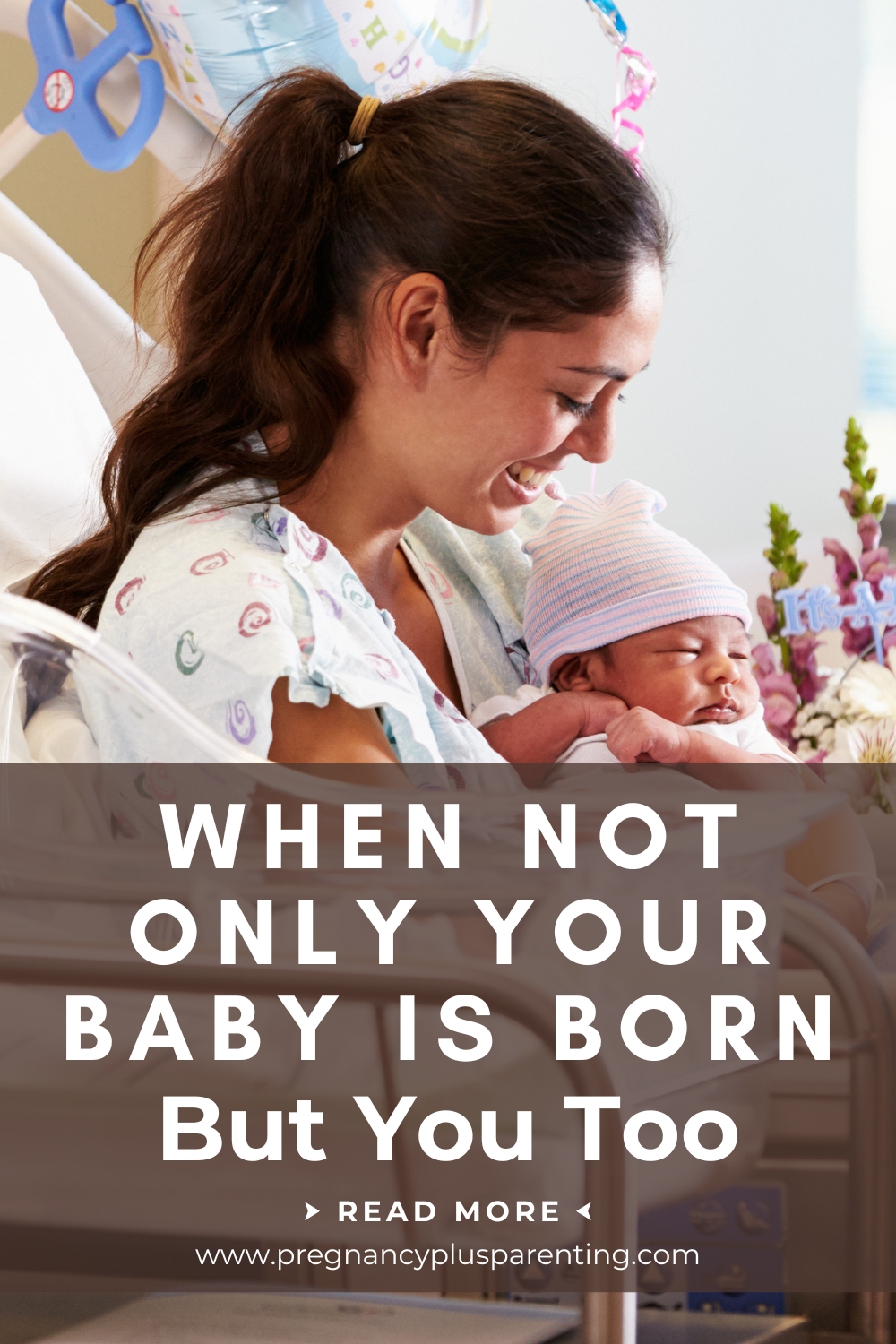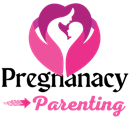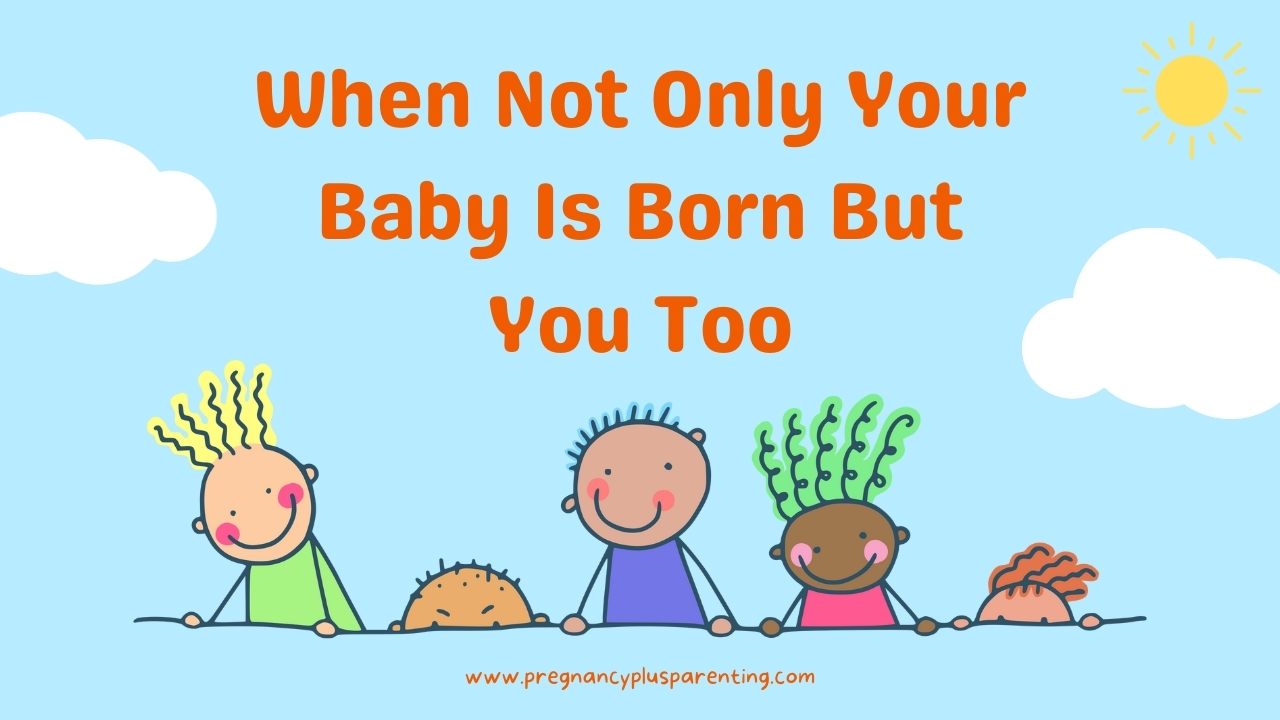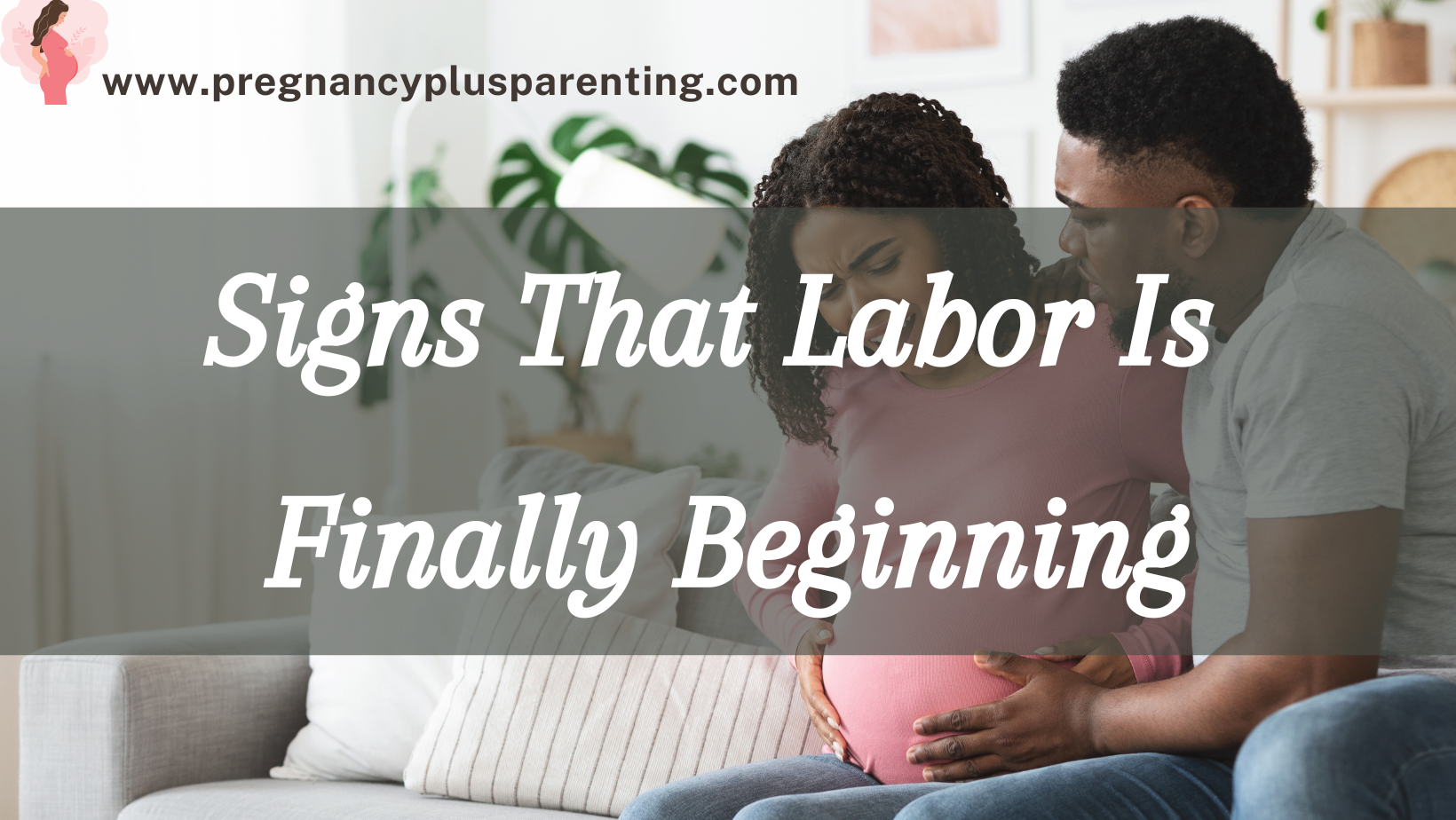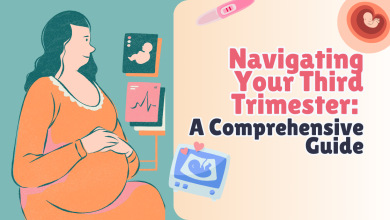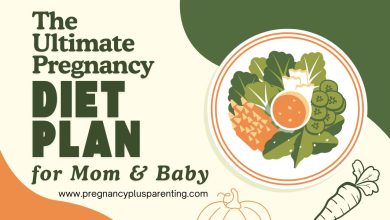When Not Only Your Baby Is Born — But You Too
Introduction
Have you ever held your newborn and felt like something inside you also shifted, softened, or woke up? That sensation — the sense that you are being born again — is real. When your baby arrives, a parallel transformation often begins in you: emotionally, physically, and spiritually. This article digs deep into that double birth — what it looks like, why it matters, and how to move through it gently and powerfully.
Understanding the Double Birth
When a baby is born, everyone claps for the tiny human — and rightly so. But the moment also marks the beginning of a new person: you, as a mother. This is not merely a poetic idea. It’s a lived experience for countless women. Identity shifts, hormonal storms, changing priorities, and new responsibilities combine to make the postpartum period a season of profound transformation. Think of it like a butterfly emerging: the caterpillar still exists in memory, but a new shape has taken wing.
The Physical Rebirth
Immediate postpartum bodily changes
Right after birth your body undergoes rapid, visible changes. Uterine contractions (yes, they continue postpartum) help the uterus return to its pre-pregnancy size. You might experience bleeding as the body clears the placenta site. There’s soreness, swelling, and exhaustion. These are not flaws — they’re evidence of what your body has done.
Longer-term physical transformation
Beyond immediate recovery, many women notice lasting physical differences: altered posture, new stretch marks, or a different center of gravity. Muscles and ligaments have stretched and, over time, they adapt. The goal isn’t “bounce back” — it’s to “move forward” by strengthening, nourishing, and treating your body with kindness.
Body image vs. function
We live in a culture obsessed with appearance. But postpartum is a time to shift the narrative from how you look to what your body has endured and achieved. Celebrate function — the ability to carry, comfort, and feed — and let appearance follow on its own terms.
The Emotional Rebirth
The emotional highs: joy and awe
There are moments of astonishment that hit like sunlight: seeing your baby’s face up close, hearing their first cries, feeling fingers curl around yours. These moments can flood you with joy and a fierce, almost volcanic love. That’s part of the rebirth too — a new map of emotional priorities centered on this tiny person.
The emotional lows: baby blues vs. postpartum depression
But it’s not all magic. Many women experience the baby blues — temporary tearfulness, mood swings, and exhaustion — which typically resolve in a few weeks. For about 10–20% of new mothers, symptoms deepen into postpartum depression (PPD) or anxiety, which are medical conditions that need care. If feelings of despair, detachment, or panic persist, reach out to a provider.
Hormones and mood
Hormone shifts (estrogen, progesterone, oxytocin) play a major role in mood after birth. They’re powerful — think of them as the backstage crew rearranging the theater while the show goes on. Understanding that your feelings have a biochemical component can relieve self-blame.
Identity Shift — Who Are You Now?
Balancing old roles with the new role of ‘mother’
Before baby, your identity was woven from many threads: partner, professional, friend, hobbyist. Motherhood adds a new, often dominant thread. You may mourn the time or the version of you that was, and that’s normal. What helps is intentionally holding both versions — honoring what was while opening to what’s becoming.
The loss and gain of identity
Losses are real: fewer nights out, less uninterrupted work time, different social rhythms. But with loss comes gain: deeper patience, a new lens for priorities, and an often surprising capacity for love and resilience. Identity re-shaping is messy and beautiful — allow yourself to be both patient and curious.
The Psychological Rebirth
Increased resilience and altered priorities
Motherhood rewires priorities. Tiny practicalities—diaper changes, feeding times—slowly rearrange how you plan the day. This practical rewiring often grows into psychological resilience: you discover you can function on less sleep, make decisions under pressure, and hold multiple demands with simmering grace.
How trauma or birth experience shapes identity
Birth stories matter. A gentle, empowered birth can boost confidence; a traumatic or medically complex birth can leave emotional wounds. Both can be integrated into your story — with help. Therapy, peer support, and time can turn a traumatic birth into a chapter of survival and growth.
Relationship Changes
Partner dynamics after birth
Intimacy, household roles, and communication all shift. Partners may feel sidelined or unsure how to help. Honest conversations about expectations, division of labor, and emotional needs are crucial. Treat the postpartum period as a team project rather than a solo performance.
Friendships and social network shifts
Friendship rhythms change too. Some relationships deepen; others drift. Seek communities—postpartum groups, moms’ meetups, online forums—where your current reality is normal, not exotic.
Physical Recovery and Self-Care
Practical postpartum care
Prioritize rest, wound care, and nutrition. If you had stitches, follow up care instructions. If breastfeeding, ensure latching and pain are addressed early. Set up simple routines: scheduled naps, easy meals, and a support roster for visitors and chores.
Fitness and movement—gentle return
Movement is medicine. Gentle walks, pelvic floor work, and guided postpartum exercises help rebuild strength. Avoid rushing into intense workouts; instead, aim for slow progression that honors healing.
Pelvic floor, core, and gentle cardio
Start with breath-based core activation and pelvic floor awareness. A physical therapist can customize approaches if you experienced diastasis recti, incontinence, or pelvic pain.
Bonding and Attachment
The newborn’s imprint on your sense of self
Attachment forms in tiny rituals: feeding, rocking, singing. These intimate moments also shape your identity as a caregiver. They’re not just for baby; they stitch a new sense of purpose in you, quiet but powerful.
Feeding, holding, and the rewiring of daily life
Feeding — whether breastfeeding, formula, or both — becomes a central activity. It shapes schedules, sleep rhythms, and even your social life. Let the process itself be the teacher: the routine will help you learn who you are as a caregiver.
Work, Ambitions, and Life Goals
Returning to work & career identity
Returning to work can feel like stepping back into an old suit: familiar but slightly altered. Planning ahead — flexible hours, childcare, or phased returns — helps. Recognize that career identity may shift but doesn’t vanish.
Redefining ambition post-baby
Many find their ambitions reframed rather than canceled. Priorities may change, but so do opportunities to pursue new dreams: entrepreneurship, part-time study, or leadership in family life.
Emotional Tools & Strategies
Mindfulness and self-compassion
Mindful minutes and self-compassion exercises reduce stress. Even five deep breaths before a feed or a walk can reset your nervous system. Replace the inner critic with a gentle coach: “You’re learning. Breathe.”
Therapy, support groups, and peer networks
Professional help is not a failure — it’s a smart resource. Support groups normalize experiences and reduce isolation. Consider postpartum counselors, lactation consultants, and local community groups.
Practical Tips to Embrace the New You
Small rituals to mark this rebirth
Create tiny ceremonies: lighting a candle after the first week, writing a letter to your future self, or taking a postpartum photo series to honor the change. Rituals anchor transitions.
Setting realistic expectations
Say no when you need to. Let others bring meals. Trade perfection for presence. A realistic plan frees you to enjoy small, luminous moments.
Celebrating the New Identity
Rituals, journaling, and storytelling
Write your birth story — whether raw or poetic. Share it with trusted friends. Documenting helps you process and celebrate the person you’re becoming.
Finding joy in small wins
Celebrate the first out-of-house walk, the first night with better sleep, or the first time you laugh at a toddler antic. Each small win is a stitch in your new identity.
When Things Feel Hard — Signs to Seek Help
Warning signs of postpartum depression or anxiety
If sadness, hopelessness, or panic persist beyond two weeks, or if you have intrusive thoughts about harming yourself or your baby, seek immediate help. PPD is treatable; early help makes recovery faster.
How to ask for (and accept) help
Practice scripts: “I need a nap,” or “Can you stay with the baby for an hour?” Direct requests make it easier for others to support you.
Stories That Inspire
Quick vignettes of transformation
-
A mother who rediscovered painting during late-night feeds and launched a home-based studio.
-
A new dad who learned infant massage and deepened his connection with both baby and partner.
-
A working mom who negotiated a phased return and felt held by both career and family.
Common threads in mothers’ rebirth stories
Patience, support, and time often lead to integration — the new identity settles and becomes a source of pride and meaning.
Resources & Next Steps
Books, websites, and communities
Look for reputable books on postpartum mental health, local mother-baby classes, and nonprofit helplines. National postpartum support lines and peer-led groups are invaluable.
How to build your postpartum toolkit
Assemble a list: lactation consultant, postpartum doula, mental health hotline, trusted friends, and a simple meal plan. Small preparation yields big relief.
Conclusion
When your baby is born, it’s easy to forget that you are also being born — into a different shape, role, and rhythm. This rebirth is not a loss but a transformation: messy, beautiful, sometimes painful, often glorious. Give yourself the compassion you deserve. Celebrate the new you, one small ritual and one honest conversation at a time. When you treat this period as a sacred beginning rather than a race to “bounce back,” you allow both you and your baby to thrive.
FAQs
1. How long does the feeling of being “reborn” after childbirth last?
There’s no timetable — some women feel immediately transformed and continue to evolve over months or years. The most intense changes usually occur in the first year, but identity continues to grow as your child and you both change.
2. How can I balance my former identity with my new one as a mother?
Start small: keep a hobby, schedule short blocks of “me time,” and set realistic goals. Communicate with your partner about shared responsibilities so you can preserve parts of your old life alongside the new.
3. When should I seek professional help for postpartum emotional challenges?
If sadness, panic, or hopelessness persist beyond two weeks, or if you have intrusive thoughts about harming yourself or the baby, contact a healthcare provider immediately. Early intervention helps.
4. Are there specific rituals that help mark this new phase?
Yes—simple rituals like writing a birth story, having a postpartum naming or welcome ceremony, creating a photo book, or lighting a candle and noting three things you’re grateful for each day help make the transition meaningful.
5. Can fathers/partners also experience a rebirth after birth?
Absolutely. Partners often undergo their own identity shifts—adjusting to changes in roles, sleep patterns, and priorities. Open communication and shared rituals can help partners integrate their new identities too.
